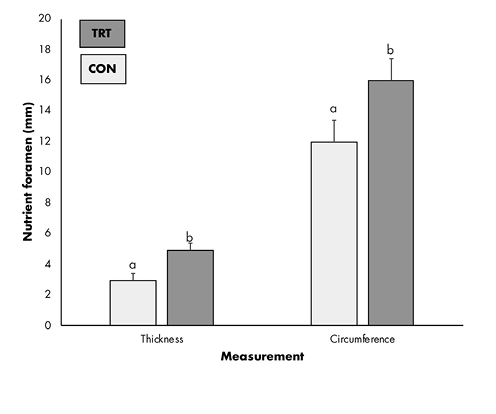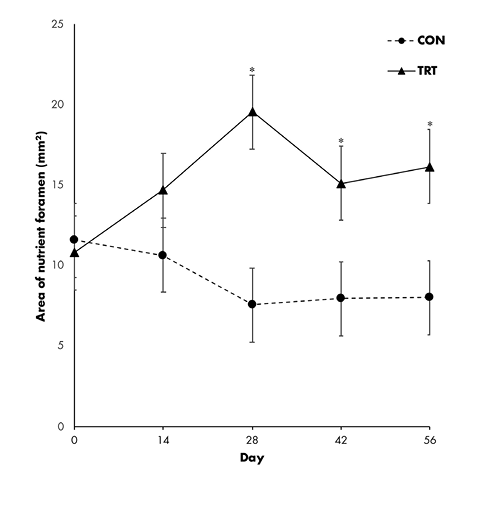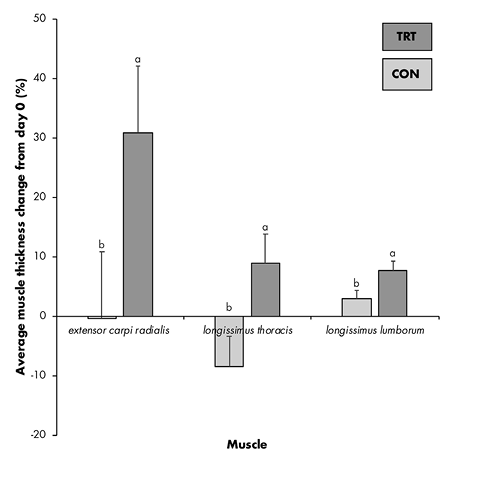Does Vibration Stimulation Offer an Effective Therapeutic Advantage to Performance Horses?
Many people use horses as a means of sport, competition, and recreation. However, like the human athlete, horses face many ailments and injuries due to the strenuous workload put on them to perform. Therefore, horse enthusiasts must be open-minded and aware of remedies for these injuries to reduce the amount of lost days in performance and to maintain proper welfare of the horse in general. Horse owners typically address injuries once they happen, but many take proactive steps to reduce the likelihood of injuries, such as warming the horse up to promote blood flow and loosen muscles.
Alternative treatments, such as chiropractic, magnetic, and shock-wave therapies, have gained popularity in enhancing athletic performance or preventing injury. These therapies act in support of traditional equine medicine or as alternatives to them. One alternative therapy that has become popular recently is vibration stimulation. There are a few different systems on the market—such as Equivibe® and TheraPlate®—that claim to improve blood flow, increase wound healing time, increase bone density, reduce stress, and provide many other benefits. However, these claims are simply observational. Documentable scientific data is needed to confirm or deny these industry claims of success, especially given the high cost of purchasing these machines.
It is quite common for horses to be stalled for long periods of time. This stalling period may be necessary for several reasons, including injury recovery, maintenance of body condition, fitting and sale preparation, and preventing injury from pasture mates. In the Thoroughbred industry, this time is typically referred to as “wastage.” Wastage includes both physiological and financial factors, money spent on rehabilitation and treating injuries or ailments, and money lost as a result of removing a horse from competition. Treatment for medical issues or injuries often requires stall rest, a halt in training, and sometimes very limited exercise. While stalling horses for long periods of time is common, it has been documented that long-term stall rest can be detrimental to bone density and muscle mass in horses.
Over time, reduction in skeletal integrity occurs due to the lack of movement during stall confinement. On top of this, muscle atrophy would be expected for the same reasons. Atrophy associated with the disuse of muscles is commonly seen in people who are on long-term bed rest for health complications that require hospitalization or following a surgical operation. Muscle disuse or immobilization can result in a notable decrease in muscle mass, circumference, and strength. Another study documented a 3 percent loss of thigh muscle volume in people exposed to a strict 7-day period of bed rest. Vibration stimulation has been considered to be a valuable tool for combatting these potential detrimental effects in people and animals who have been immobilized.
A study determining the effect of vibration on bone mineral content on stalled horses, as well as horses undergoing light exercise, found that vibration therapy maintained bone mineral content. In another study, researchers exercised horses 6 days per week for 1 hour per day to stimulate low-impact exercise. These horses were then exposed to vibration routinely for 28 days. Results suggested that vibration treatment had little impact on bone mineral content and no effect on the circumference of the gaskin and forearm muscles.
Because of the numerous animal and human studies that have been somewhat conflicting, we wanted to investigate whether the use of a vibration plate would benefit performance in horses subjected to stall rest. Our first objective was to determine the effect of vibration stimulation on bone parameters such as dorsal cortical thickness (DCT) and nutrient foramen thickness, circumference, and area (NFT, NFC, and NFA, respectively) of the front left third metacarpal bone in stall-rested, mature, stock-type horses. The effect of vibration treatment on these portions of the bone could indicate strengthened areas and imply improvements to blood flow to the lower limb.
Treatment (TRT) horses (horses that were subjected to a vibration plate; specifically, TheraPlate) had greater overall average NFT and NFC when compared to control horses (CON) (Figure 1). Horses in the CON group were simply on stall rest and not subjected to TheraPlate treatments. Over time, TRT horses had greater NFA at days 28, 42, and 56. Similarly, NFA of TRT horses remained the same throughout, while CON horses decreased by 30 percent from day 0 to days 28, 42, and 56 (Figure 2). No difference was observed in DCT. An enlargement in the nutrient foramen, as detected in our study, may provide greater passage of vasculature, which in turn may enhance nutrient blood flow of the distal limb. This improved blood flow could improve healing time to injured areas of the lower limb. Therefore, TheraPlate may be a viable therapeutic option for performance horses during stall rest.


We also wanted to evaluate the possible influences TheraPlate had on muscle thickness of horses subjected to vibration stimulation. Over a 56-day period, the thickness of the longissimus thoracis in TRT horses increased by 8.9 percent, which was significantly greater than the 8.4 percent decrease observed in CON horses. Additionally, thickness of longissimus lumborum in TRT horses increased by 7.7 percent—significantly greater than the 2.9 percent increase observed in the CON group. The thickness of the extensor carpi radialis in TRT horses was also increased by 30.9 percent, which was significantly greater than the 0.40 percent decrease seen in CON horses. Both the longissimus thoracis and longissimus lumborum muscles are supporting muscles in the thoracic and lumbar regions, which the equine athlete greatly relies upon. Therefore, TheraPlate appears to be a viable option for minimizing, if not improving, muscle loss in stock-type horses during stall rest (Figure 3).

In today’s market of gimmicks and “magic” supplements, horse owners must rely on sound practices that actually work in order to get the most athletic potential from their horses. Additionally, horse owners are interested in ways to provide the most up-to-date management practices, feeding strategies, and therapies to reduce stress and potential injury. However, owning a horse does eventually lead to the necessity of a veterinarian. Veterinarians and horse owners alike are looking for additional treatment options that are beneficial to the overall horse health and lead to reduced time off from competitions. Vibration plate therapies, like the TheraPlate, seem to be a plausible option for therapeutic benefit to horses subjected to stall rest for numerous reasons. Future studies addressing other claims, such as reduced physiological and psychological stress and even improved wound healing time, are warranted.
The Mississippi State University Extension Service is working to ensure all web content is accessible to all users. If you need assistance accessing any of our content, please email the webteam or call 662-325-2262.


